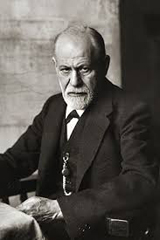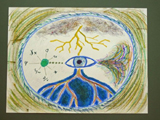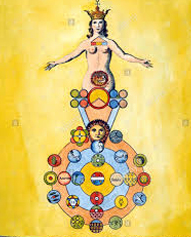Psychology
Archetypal Psychology
Abstract
Archetypal Psychology is a field of psychology that was born in the early 1970s, formulated by the psychologist, James Hillman. It treats the soul, or the innermost haloed entity in a person, as the primary object of attention. This new psychology is in contrast to older psycho-analytical methods where the subconscious is treated as the primary source of information. In Archetypal Psychology, fantasising, mythologizing, embodying archetypes, weaving soul-stories, personifying, sensing the aliveness of everything animate and inanimate are ways of healing oneself. Archetypal Psychology considers psychological pathologies as messages coming from the soul that we need to pour into and not get rid of, with superficial cures. This article introduces Archetypal Psychology and gives a glimpse of its refreshing worldview.
Introduction
In 1930, some years after the end of the First World War, one of the pioneers of psychology, Sigmund Freud, wrote his reflections on human civilization. This book, Civilization and its Discontents, became one of his lasting legacies. Here he observed that man has two antagonistic powers within himself, which are both “Heavenly Powers”. One is the death-instinct, and the other the love-instinct. If man cannot destroy others and nature, his death-instinct will turn upon himself. The only way out of his aggression is to let love win over his soul. Eros and Thanatos are tearing him apart right now, more than ever before, since he has the tools to destroy the planet, and also the wisdom to preserve it. This fore-knowledge plays as a leitmotif in his life. It shows up as anxiety, as physical and mental diseases, as terrorism, as fear of the terrorist, as social unrest, as selfishness and hopelessness. Freud left the question of who would win unanswered — love or death (1). Subsequently, the destructive powers have had a long run, with another World War, and bloody conflicts that are still raging all over the planet.
The path of Love
There are many paths that lead to Love. Man stands at the crossroads with multiple choices. What he chooses will determine where he ends up. Love and Life-based ideas and lifestyles are being embraced by the pioneers of the new Renaissance. Some of these movements are: enchantivism — story-telling to reconnect with one’s soul; animism — seeing the world endowed with Life; primitivism — reclaiming one’s childlike curiosity of supernatural beings. These people look back at the golden age of literature, of spiritual efflorescence, pore over wisdom texts. They rediscover land-based technologies that were eco-friendly and saw the Earth and others as part of the same system. They realise that one person’s happiness is dependent on everybody else’s. This truth was common knowledge in primitive societies. It did not have to be imposed with ‘Love Thy Neighbour’ commandments. There were justice systems that regulated infractions. The Selfish Gene was the anomaly. The path of Love that I would like to explore here is Archetypal Psychology.
Archetypal Psychology
James Hillman (1926-2011), was one of the founders of Archetypal Psychology. Hillman, an American psychologist, started off as a student of Carl G. Jung, who was himself a student of Freud in his early days. Each psychologist has taken a step closer to the supernatural and the subliminal. They use their own terminologies, different from the ones I just used and they may even differ in detail. But the essential movement remains — that of opening up the field of psychology to greater possibilities. Hillman’s school of thought is called Archetypal Psychology because he describes humans as embodiments of super-hero archetypes. Given his upbringing, he uses Greek Gods as these archetypes. People in India can relate to the archetypes of Rama, Krishna, Karna, Arjuna and so on. Every culture has its mythologies replete with archetypes that manifest in a human being, sometimes more than one at a time. When a person is seen as a composite of these super-beings many possibilities open up for his growth. Let us dive deeper into Archetypal Psychology, because I feel it is a method to liberate ourselves from the mundane and touch the numinous within.
Feeling-tone of Archetypal Psychology
Archetypal Psychology accepts supernatural experiences and ensouls inanimate things. It discards traditional psychoanalysis, labelling of diseases or even seeing diseases as anomalies. It says pathologies are the calls of your soul, asking you to pay attention, to give them the gift of empathic listening (2). If you mistrusted conventional dream analysis where they were interpreted by statistical comparison of dreams and symbols were assigned to images, you would feel at ease in this realm where dreams are liberated from interpretation. Here, your whole being is liberated from any sort of judgement. Archetypal psychology opens new windows in your being. The air that drifts in is rich with earthy tinges, the juicy smell of the soul, the mellifluous odour of wounded grass. In this place you can commune with the archetypal gods and see them range freely within you. You can reckon with your soul and map it out on paper. You can sit with your dream as with a friend and chat with it. All these processes are like running in an unbounded prairie and breathing in fresh air. If it starts raining or snowing, you let them drench you and you soak in their essence.
The study of Archetypal Psychology is not a mental game, but a weaving of soul-stories. Archetypal psychology uses images and imagination as the anvil on which base metal is beaten into soul-stuff. Heating metal, liquefying it, hammering it into shape all involve much violence. War and destruction lead to a new creation. Our birth from our mother’s womb is the first hero’s journey we undertake. Archetypal psychology does not flinch from pain. It welcomes it as an opportunity.
Angelology of Words
Hillman says the power of the word has been lost by literalising it. 500 years of the rational era had created a fear of the numinous capitalised words, such as Justice and Love. “Logophobia” took hold of the collective mind so strongly that capitalised words appeared first tentatively as allegories (3). The Romantic poets brought them back, as did Animism and Neoplatonism. Denying primacy to the word is stifling the intuitive messages that are sent to us as gifts from above. Denying language that is strung from words is stifling the goddess of literary artforms. Her language is poetic, imaginative, sensual, full of radiance. She is also the goddess of Love. When we stifle her, we stifle the inner core in us, our soul. The soul is playful and wants to experiment with expressing itself. It likes to wear masks and enact roles. Hillman invites fiction into the realm of soul-making, just as dreams are theatres of the being, as real as can be when the dreamer is dreaming them. The fantasies the soul weaves do not need to be its lived experiences. That they are imagined means they exist somewhere. There is no need to assign living actors to these stories (4). These are the mythologies we create for ourselves and the gods and goddesses that populate our myths are the archetypes we embody.
Sometimes Hillman goes to the etymological essence and rescues a word from its derivative usage. “Therapy” is derived from the Indic root “dhara”, which means to “hold”. The purpose of therapy is to hold the patient, as would a friend (5). Hillman creates new words from root words, such as “angelology”. So, if I am allowed the liberty of coining words, I would say: if one is sad about losses, the word to describe it could be lostalgia, where algia in Greek means “pain”. The aversion to analysis could be analysophobia.
Dreams
Archetypal psychology uses dreams as an important source of truth. We are not in any hurry to find a meaning to explain away our dreams. In Hillmanian dream analysis, one is to stick to the image. One can enrich it with archetypes, from mythologies from world cultures, from personal associations. But one should not assign a meaning to the image. It devalues the image, which is primordial. It exists independent of the dreamer. It has a place in the anima mundi. A dream is like a Zen kōan, which does not need a resolution, but it needs tending to. Sit with it today and again next week and continue sitting with it for years. Every time you engage with it, it may reveal something more of itself. Catch the feeling-tone of the dream, amplify it, and observe how it reveals more facets of itself.
Personification
To understand people well, one needs to fall in love with them. The same is true of objects. To know an object, one needs to fall in love with it, and so, one needs to personify the object. In gendered languages, most things have a feminine, masculine or neuter gender, same as people. These languages personify a little more than English. But real personification happens when an object is treated like a living being. This is animism, where every instance of the object is given a unique identity (6).
Anima Mundi
By removing the nymphs and supernatural beings from modern thought, we have banished the numinous from our lives, the animated world of soul. These creatures do exist in the Anima Mundi, the animated world, irrespective of whether we see or imagine them. The denizens of the Anima Mundi will send us their covert messages once we start tuning in to them. Synchronicities occur when a person is ready for them. When problems surface as pathologies, instead of rushing to make them disappear, we need to sit with them and find out why they have come. A sick soul throws up pathologies to draw our attention. A sick culture soul talks to us through cultural afflictions. Curing the pathology would be like curing the symptom. The disease remains untreated, so it will throw up other symptoms.
War Ethos
Cartesian thought and its baby, science, have created much to make life easier in the physical plane. But they have also worshipped the outwardly successful man, the hyper-individual. In all early civilizations, sharing was a necessary survival technique. Sharing not just with other peoples but also with animals and the earth. Sharing starts with offering one’s food to God. All ancient cultures the world over began with worshipping the sun, moon and all the aspects of nature that regulate cycles of life. Man saw himself as a player and not a major one at that. He was grateful when things worked out for a season and he bowed his head in obeisance. His clothing was not stiff; so, it was easy to genuflect. The up-tightness of modern clothing is just one indication of the way personal boundaries have crept close to the ego-self. The concept of private property, customised products, well-demarcated borders, written laws, arbitrating agencies, middle-men… are all artefacts of a society that has forgotten to love. And what does it do to the human psyche — a naturally gregarious, playful thing that loves to commune with nature? All sorts of psychological diseases can be traced back to these systems. Even the choice of literature can be seen to shift to cruel, morbid, dark and self-hurting works. As for art, the ugly and distorted can pass off as works of art. The guardian of the being is telling that it is sick in so many ways. A deep introspection is urgently needed.
Conclusion
In a modern myth imagined by Mary Shelley (1797–1851), the scientist, Frankenstein, creates a monster in his laboratory that will end up ruining him and the world. This monster has many faces, one of which we all saw in Hiroshima. Now drones can be commandeered to kill anyone that resembles a suspect — by a youngster on the other side of the planet. We are at an important stage in civilization where we can make a conscious choice to love. We have centuries of historical education in war-making. We have little expertise in loving. But that is exactly what beckons the youthful spirit psyche — to be curious, flexible, try out something new.
References
1. Freud, S. (Transl. Strachey J.) Civilization and its Discontents. New York: WW Norton & Company, Inc; 2005 edition (first published 1930), p. 155.
2. Hillman J. Re-Visioning Psychology. New York: Harper & Row; 1975, pp. 70-1.
3. Ibid., pp. 8-9.
4. Hillman J. (1983). Healing Fiction. Barrytown, NY: Station Hill Press; 1983, p. 80.
5. Hillman J. Suicide and the Soul. New York: Harper & Row; 1964, pp. 115-6.
6. Hillman J. Re-Visioning Psychology. pp. 14-5.
Lopa Mukherjee is a writer and documentary maker of educational and spiritual topics, and is a psychology student in San Francisco, California.
Share with us (Comments,contributions,opinions)
When reproducing this feature, please credit NAMAH,and give the byline. Please send us cuttings.





